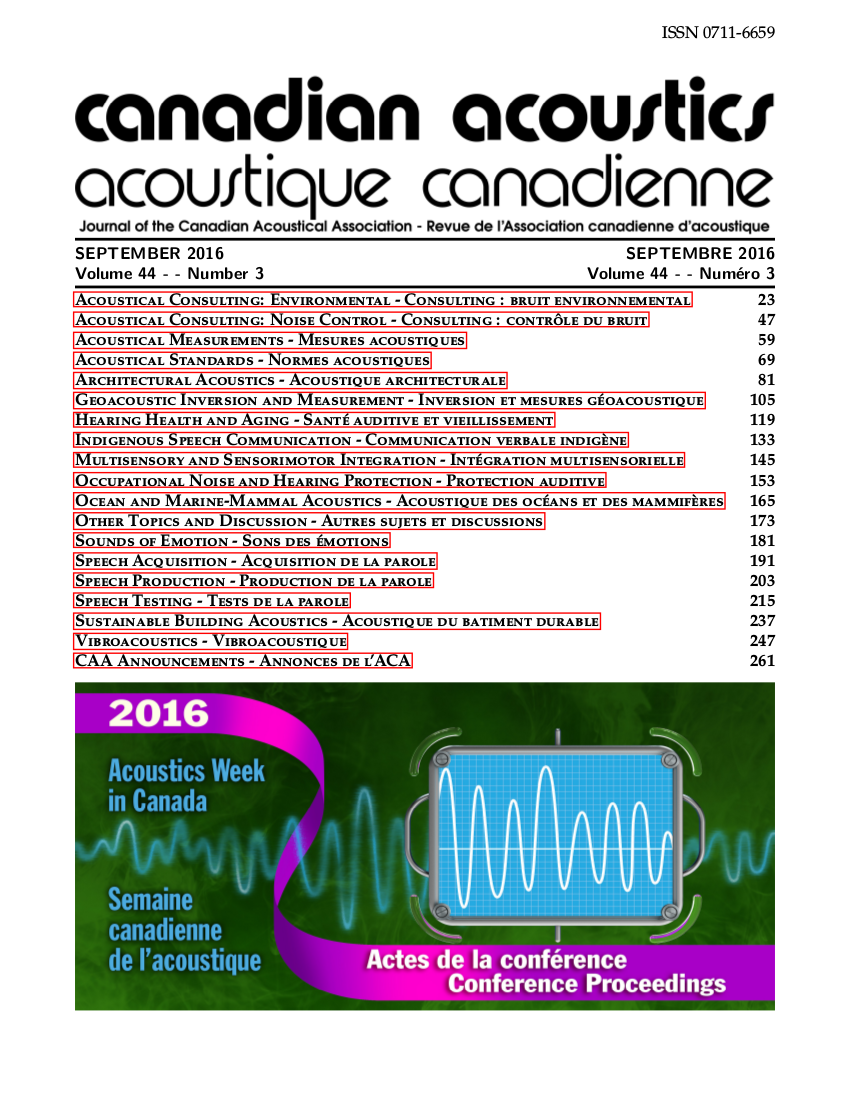Blind channel estimation of underwater acoustic waveguide impulse responses using marine mammal vocalizations
Abstract
Some techniques for underwater passive acoustic localization make use of estimates for the direct and/or interface-reflected acoustic arrival times of an acoustic source at one or more underwater hydrophones. This estimation task can be difficult for non-impulsive sound sources, such as humpback whales, due to later arrivals being masked by earlier ones. In linear system analysis, the impulse response of a system is the system output when the input is an impulse (i.e., a short duration, large bandwidth signal). The impulse response of a system contains information about the propagation environment, and expresses how a source signal interacts with the environment to yield the output waveform (e.g., that recorded by a hydrophone). The recording of a relatively impulsive call (e.g., a sperm whale click) approximates the impulse response between the whale and hydrophone. In recordings of such a call, arrival time estimation can be straightforward. For non-impulsive calls, if the source waveform is known, the impulse response can be estimated through techniques such as deconvolution or cross-correlation. The case of unknown, non-impulsive calls is particularly challenging. However, given the wealth of information present in the impulse response, we seek to estimate impulse responses even in these adverse conditions. Blind channel estimation (BCE) is the process of estimating the set of impulse responses between a single (frequently, unknown) source and multiple receivers, and can potentially help estimate direct and interface-reflected arrival times for non-impulsive marine mammal vocalizations since the impulse responses can be analyzed rather than the waveforms or spectra. In this paper, we look at simulation and measured-data results using marine mammal vocalizations to estimate underwater acoustic impulse responses.Additional Files
Published
How to Cite
Issue
Section
License
Author Licensing Addendum
This Licensing Addendum ("Addendum") is entered into between the undersigned Author(s) and Canadian Acoustics journal published by the Canadian Acoustical Association (hereinafter referred to as the "Publisher"). The Author(s) and the Publisher agree as follows:
-
Retained Rights: The Author(s) retain(s) the following rights:
- The right to reproduce, distribute, and publicly display the Work on the Author's personal website or the website of the Author's institution.
- The right to use the Work in the Author's teaching activities and presentations.
- The right to include the Work in a compilation for the Author's personal use, not for sale.
-
Grant of License: The Author(s) grant(s) to the Publisher a worldwide exclusive license to publish, reproduce, distribute, and display the Work in Canadian Acoustics and any other formats and media deemed appropriate by the Publisher.
-
Attribution: The Publisher agrees to include proper attribution to the Author(s) in all publications and reproductions of the Work.
-
No Conflict: This Addendum is intended to be in harmony with, and not in conflict with, the terms and conditions of the original agreement entered into between the Author(s) and the Publisher.
-
Copyright Clause: Copyright on articles is held by the Author(s). The corresponding Author has the right to grant on behalf of all Authors and does grant on behalf of all Authors, a worldwide exclusive license to the Publisher and its licensees in perpetuity, in all forms, formats, and media (whether known now or created in the future), including but not limited to the rights to publish, reproduce, distribute, display, store, translate, create adaptations, reprints, include within collections, and create summaries, extracts, and/or abstracts of the Contribution.


